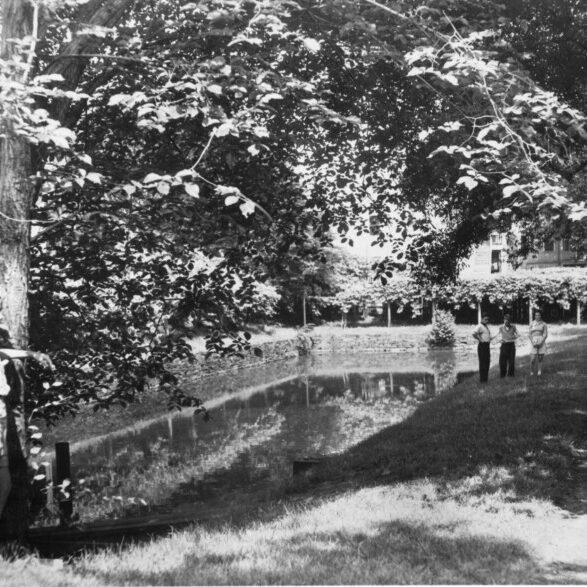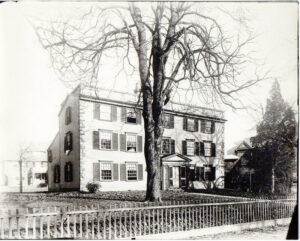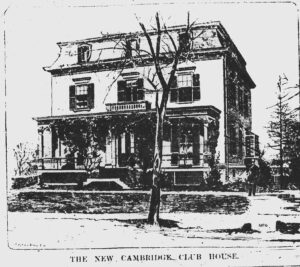
From a Bleachery to a Playground
By Michael Kenney, 2014
It does look something like a swimming pool in this undated photograph from the Historical Commission. The location is just off Sacramento Street, and the girl, resting her arm against a tree, looks as if she is contemplating a swim, while the three adults lend a note of artistic composition to the scene.
A current image, however, will show Sacramento Field, a neighborhood playground with no hint of a pool — let alone of the reservoir for the Middlesex Bleachery that occupied the site some 70 years ago. “To the occasional observer,” the Cambridge Chronicle wrote in 1922, the pool “presents a beautiful appearance… bordered on three sides by arched arbors which in summer are weighted down by grapes.”
The reservoir was fed by natural springs and artesian wells. At one end, near Massachusetts Avenue, the idyllic scene was upstaged by a long narrow building with a tall steel smokestack. Inside were pumps that every day forced some 100,000 gallons of water through a long concrete pipe that led under Beacon Street to the bleaching and dying vats in Somerville. As the story goes, the owner of the bleaching plant had heard about the spring, bought the property, and created the reservoir. But he also “saw the possibilities of the place for recreation,” hiring gardeners to plant flowers and even stocking the pool with fish for anglers.
The idyllic scene had changed by the 1940s, and by 1960 the site was described as “vacant” and as “not used.”
The site came back to life in the 1980s. Harvard had bought it in the mid-1950s and had landbanked property on which they planned to build 40 units of housing. But the neighborhood was strongly opposed, and the city moved to purchase the site with City Manager James Sullivan opining: “We want to give Harvard the first opportunity to be known as a philanthropic institution.” Harvard wasn’t buying the city’s $480,000 offer, holding out for another quarter million dollars, prompting the city to take the site by eminent domain. Harvard sold most of the property it had acquired, retaining two neighboring parcels for undergraduate housing.
Before the matter was settled, City Councilor Al Vellucci played his always entertaining role: “If Harvard gets flippy with us, we can get a little flippy in return. The taxpayers of Cambridge pay for all the electricity that lights all the streets around Harvard. We should send the Electrical Department around to these streets, and start turning off those lights.”


